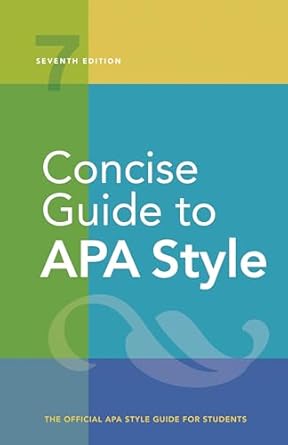[toc]
copyright attribution guide academic writing essentials
Concise Guide to APA Style: 7th Edition (OFFICIAL)
Page 234 Review
Understanding Copyright Attributions in Academic Writing
Navigating the complexities of copyright is crucial in academic writing.
When incorporating material from other sources, proper attribution is essential to avoid plagiarism and respect intellectual property rights.
This article delves into the nuances of copyright attributions, providing examples and guidance for researchers and students.
When is Copyright Attribution Necessary?
According to the text, it’s vital to “determine when a copyright attribution (and possibly also permission) is necessary.” This underscores the importance of understanding copyright law and its implications for academic work.
Failure to properly attribute sources can lead to serious consequences, including academic penalties and legal repercussions.
Examples of Copyright Attributions
The provided text offers several examples of copyright attributions for reprinted or adapted tables and figures.
These examples illustrate how to properly cite different types of sources, including journal articles, books, and websites.
Journal Article (Copyrighted, No Permission Needed)
When citing a copyrighted journal article where permission isn’t required, the following format is recommended: “From ‘Romantic Relationship Development: The Interplay Between Age and Relationship Length,’ by A.
Lantagne and W.
Furman, 2017, Developmental Psychology, 53(9), p. 1744 (https://doi.org/10.1037/dev0000363).
Copyright 2017 by the American Psychological Association.” This example includes the title of the article, authors, year of publication, journal name, volume, issue, page number, DOI, and copyright information.
Journal Article (Creative Commons License)
For journal articles with a Creative Commons license, the attribution should reflect the specific license type: “Adapted from ‘Comprehensive Overview of Computer-Based Health Information Tailoring: A Systematic Scoping Review,’ by A.
K.
Ghalibaf, E.
Nazari, M.
Gholian-Aval, and M.
Tara, 2019, BMJ Open, 9, p. 6 (https://doi.org/cz6h).
CC BY-NC.” This example includes the adaptation note and the CC BY-NC license.
Whole Book (Copyrighted, No Permission Needed)
Citing an entire book requires a similar level of detail: “Adapted from Managing Therapy-Interfering Behavior: Strategies From Dialectical Behavior Therapy (p. 172), by A.
L.
Chapman and M.
Z.
Rosenthal, 2016, American Psychological Association (https://doi.org/10.1037/14752-000).
Copyright 2016 by the American Psychological Association.” This includes the book title, authors, year of publication, publisher, and copyright information.
Edited Book Chapter (Copyrighted, Permission Needed)
When citing a chapter from an edited book, it’s crucial to acknowledge the editor and the chapter’s author: “From ‘Pharmacokinetics,’ by V.
Yellepeddi, in K.
Whalen (Ed.), Pharmacology (6th ed., p. 2), 2015, Wolters Kluwer.
Copyright 2015 by Wolters Kluwer.
Reprinted with permission.” This example also highlights the importance of obtaining permission when required.
Webpage or Website (Public Domain)
For websites in the public domain, the attribution should clearly state this: “From What Parents Can Expect in Behavior Therapy, by Centers for Disease Control and Prevention, 2017 (https://www.cdc.gov/ncbddd/adhd/infographics/what-parents-expect.html).
In the public domain.” This indicates that the material is free to use without restriction.
Data from the U.
S.
Census Bureau (Public Domain)
Similarly, data from the U.
S.
Census Bureau, which is in the public domain, should be attributed accordingly: “Data are from ‘Annual Estimates of the Resident Population for the United States, Regions, States, and Puerto Rico: April 1, 2010 to July 1, 2018 (NST-EST2018-01),’ by the U.
S.
Census Bureau, 2018 (http://bit.ly/2vObucA).
In the public domain.”
Key Takeaways
The examples provided in the text emphasize several key points:
- Accuracy: Ensure all attribution details are accurate and complete.
- Consistency: Follow a consistent citation style throughout your work.
- Permissions: Obtain necessary permissions from copyright holders when required.
- Placement: Place the copyright attribution at the end of the table or figure general note.
Conclusion
Proper copyright attribution is a fundamental aspect of academic integrity.
By understanding the principles and examples outlined in the text, researchers and students can confidently navigate the complexities of copyright and ensure their work is both ethical and legally sound.
The text clearly states the ultimate goal: “You may need to use different wording from that shown here depending on the requirements of the copyright holder.”
Buy full ebook for only $18: https://www.lulu.com/shop/american-psychological-association/concise-guide-to-apa-style-7th-edition-official/ebook/product-rmzpq54.html?page=1&pageSize=4
Copyright Attribution Guide Academic Writing Essentials
Read more: Capitalization Rules: A Guide for Academic Writing

